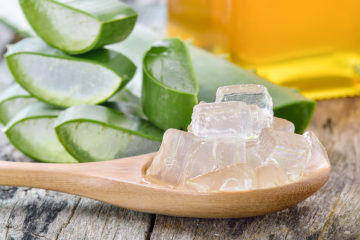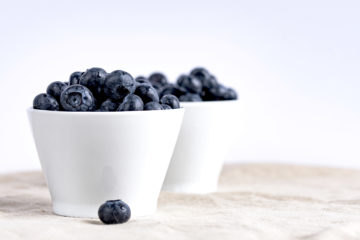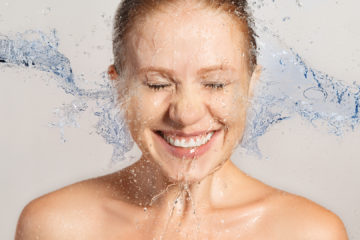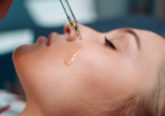Face Masks 101: Choosing The Right Face Mask For Your Skin

You might be wondering:
With all the different types of face masks out there, how exactly do I choose one that is good for my skin?
Well…
The secret is actually in the ingredients!
Facial masks may not be an essential step in your daily skin care routine. However, applying the facial masks will not only give you that soothing spa feeling, a well formulated mask when used regularly has surprisingly great benefits that will improve the condition of your skin by leaps and bounds.
Ingredients make or break the quality of facial masks and its effects.
Skin Irritants
Certain ingredients have been test and proven to be irritating to the skin, however they are still commonly used in skin care products and face masks!
If you see any of the following ingredients in the face masks, drop them right away!
Alcohol
For skin, there is good alcohol and bad alcohol. Whether they are good bad depends on whether they are high-molecular-weight alcohols or low-molecular-weight alcohols (some chemistry knowledge involved).
However…
The bad alcohols do so by destroying the epidermis – the skin’s surface layers. If applied over a long period of time, it actually harms your healthy skin cells and lowers your skin’s resilience to free-radical damage.
In addition, when products contain alcohol, you may think that your face is absorbing the nutrients from the mask very quickly.
In actual fact…
The cooling and fresh sensation that you experience is the alcohol speeding up the evaporation process. This can potentially mislead you to think that the product has been absorbed.
Think of it as your money evaporating together with the alcohol!
Alcohols like ethanol, ethyl alcohol (derivative of ethanol), denatured alcohol, methanol, isopropyl alcohol and SD alcohol tend to be also drying and may result in skin irritation.
But like we mentioned…
Not all alcohol is bad. Fatty alcohols are known to be exceptionally beneficial to the skin. Ingredients like cetyl, stearyl and cetearyl alcohol are good ingredients for dry skin.
(why are they good?)
You don’t have to remember the exact alcohol ingredients though, here are two general rules that you can follow:
Rule #1
- If you see the words alcohol or ethanol by itself, it is a clear sign that the mask will damage your skin. However, if it is an alcohol like phenoxyethanol, cetyl alcohol, these are okay for the skin.
Rule #2
- When the alcohol ingredients are present at the top of the ingredient list, put the mask back immediately! If they are at the bottom of the list, they aren’t in high enough concentration to cause problems to the skin.
Menthol
Menthol is one of the most common ingredients used in facial masks because it provides a refreshing and cooling sensation when applied to the skin.
But guess what…
That sensation is actually your skin being sensitized!
Studies from the Archives of Dermatological Research show that menthol (that is derived from peppermint) has the ability to cause skin irritation.
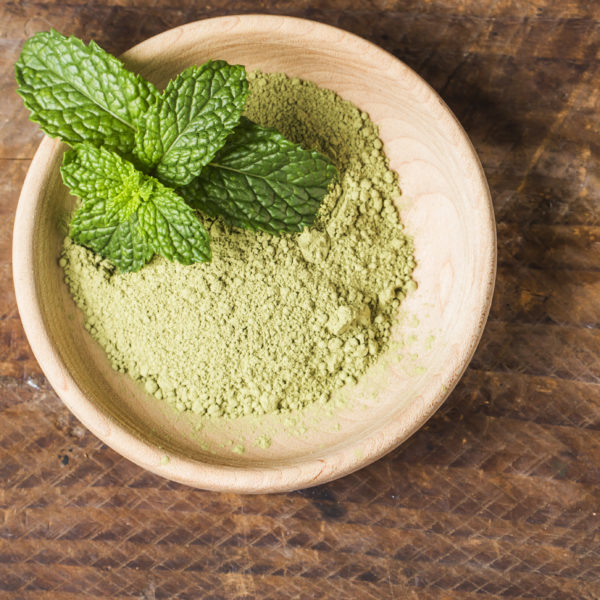
Lemon
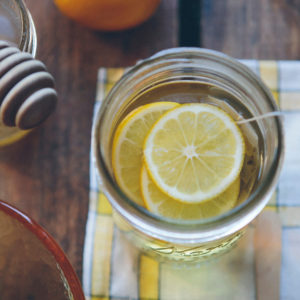
But simply put, lemon juice is…
BAD for the skin.
Our skin’s natural pH level is actually 5.5. Lemon juice, however, is highly acidic in nature (pH 2) and can easily irritate the skin.
The lower the pH level the more acidic the skin care product, and applying an acidic skin care product will produce a burning sensation.
In addition, when lemon juice is applied to the skin, it can cause photosensitivity on exposure to sunlight because of the chemical limonene that it contains.
Cosmetics and skin care products that contain lemon juice, lemon oil, lemon balm, lemon or limonene should be totally avoided.
Finding The Most Suitable Face Mask
In selecting the best face mask for your skin, you need to understand your skin type and condition as well.
For normal to dry skin…
Consider using masks that moisturize and hydrate your skin.
For oily or combination skin…
You can look out for facial masks that help absorb oil and at the same time dislodge superficial blackheads to leave your skin feeling smooth.
For combination skin…
You get to enjoy the best of both worlds! Try to use the moisturizing formula on dry areas and the oil absorbent mask on the oily areas.
(To find out more about your skin type, see our article here)
But exactly what ingredients are good for moisturizing and what ingredients are good for oil absorption? Let’s find out…

Absorbents
Charcoal
Charcoal is made by charring organic material that in the absence of oxygen. It is another ingredient that is commonly used in facial masks and have excellent absorption properties
Kaolin
Kaolin is a naturally occurring clay mineral that is known for its absorbent properties. It is a highly popular ingredient that is used in clay masks because of its absorbent properties.
Bonus Tip
You may have been using clay and charcoal masks all wrong!
There are three phases when you apply a clay or charcoal mask. There is the damp phase where the mask is still moist and wet right after application, the semi-dry phase and the dry phase.
Caution: When the mask is left on for too long and reaches the dry phase, it starts to draw out moisture from the skin’s surface causing dehydration and irritation. This normally happens when the mask is already dry and flaky.
Use these clay or charcoal mask removal steps instead…
What you should do is to remove the mask when it is at the semi-dry phase. You can do the touch test to check if it is still sticky and the colour of the mask would also be lighter.
Doing this would allow you to remove excessive oil on skin’s surface and maximize the benefits of applying an oil-absorbing mask without leaving your skin feeling dry and tight or irritated.
Hydration
Glycerin
Glycerin or glycerol is a skin-replenishing and restoring ingredient. This means it can be found in the skin and it helps the skin to maintain a healthy and dewy look.
Combined with other ingredients like emollients, the power couple are the fundamental building blocks of moisturizers and moisturizing facial masks.
Caprylic
Another essential ingredient, if you are looking for the best hydrating facial mask for dry skin, would be caprylic or capric triglyceride (fatty acids).
Caprylic is derived from both coconut oil and glycerine. Research has shown that it is an excellent skin replenishing ingredient. This ingredient also helps to restore the surface of the skin and reduce moisture loss from the skin’s surface.
Supplementary Ingredients
If you are suffering from a bout of breakouts, getting a facial mask with skin soothing ingredients is something you can consider too.
Ingredients like oatmeal, honey, aloe vera, cucumber and antioxidants are known for their skin soothing properties and can help to calm the skin and reduce skin irritation.
Skin Whitening
Another extraordinary ingredient is arbutin which is commonly used for skin whitening.
Arbutin works by breaking down into hydroquinone, it also helps to improve the appearance of dark spots which is caused due to unprotected sun exposure.
It is often considered as an alternative to hydroquinone and can be found in some of the Paula’s Choice mask products like the Radiance Renewal Whitening Mask.
DIY Face Masks
Search for the best facial masks on the internet and there lists and lists of DIY masks that you can choose from. In addition, ingredients like oatmeal, honey and cucumber can easily be found in the supermarket.
But the question remains, are DIY facial masks really beneficial?
Although doing it yourself may sound like a good idea, it is harder to put into practice. This is because there are numerous things that you need to look out for when formulating your own facial masks.
For example:
Composition Percentage and Concentration
Even though you now know what are the ingredients to look out for that will benefit or irritate you skin. Getting the right mix is easier said than done. This type of measurement is harder to keep track of in a home setting.
Remember…
Apply your skincare products in moderation.
Even if you have an excellent ingredient, too much of it may actually irritate and hurt your skin.
Hygiene
Over-the-counter skincare products from major skincare brands often hold good manufacturer certifications. This certification ensures the laboratories skincare brands work with have safe and clean manufacturing process.
Going DIY on the other hand can be very tricky when mixing the right kind of mask for your skin type and skin’s concern. It is important to ensure that the environment and equipment that you are working with are clean and germ-free.

BONUS Tip #1
No matter how great the formula and ingredients that this facial masks contain, they won’t be effective when they are exposed to light and air.
Ingredients like antioxidants (which provide a lot of benefit for the skin) when exposed to the sun and the air will actually lose its stability and its benefits too.
In addition, dipping your finger into the jar may transfer bacteria from your fingers to the product further deteriorating the efficacy of the product.
BONUS Advice #2
Research has established that fragrances are among the most common causes of skin irritation and allergic skin reactions.
Although your skin may not show an immediate reaction, irritating ingredients from these fragrances may cause collagen to breakdown in the dermis layer of your skin (below the skin’s surface). This reduces your skin’s ability to heal and fight against free-radical and environmental damages.
There are some fragrances which are gentle on the skin, however, as a general guideline, it is good to avoid all facial masks with fragrances in them.
Application Instructions
This step is highly dependent on the product instructions. Some masks can be left on overnight for it to work their magic.
Some masks need to be rinsed and removed once they start to dry (like the clay and charcoal masks we mentioned above).
Always take a look at the facial masks application steps (on the product packaging) so that you can get the best out of the facial mask that you are using.
Get That Glowing Skin Back
Whether you like using a clay mask, charcoal mask or cream mask. The most important thing is understanding how the ingredients inside the mask work for your skin and how you can benefit from it.
Using a good facial masks would benefit your skin better than just once a week so being disciplined and sticking to your skin care routine is also important.
Seen any other common ingredients in your facial masks that we didn’t talk about? Leave us a comment and we would be glad to answer your questions.


